Did you know that plants can have friends? It’s true! Some plants grow better when paired with other kinds of plants. These kinds of plants that bring out the best in one another are called companion plants. When you practice companion planting, you may not have to use pesticides or fungicides because the companions repel pests and diseases.
If you want to grow lavender, you may wonder which plants are good companions for this lovely flower. Here are 7 great companion plants for lavender.
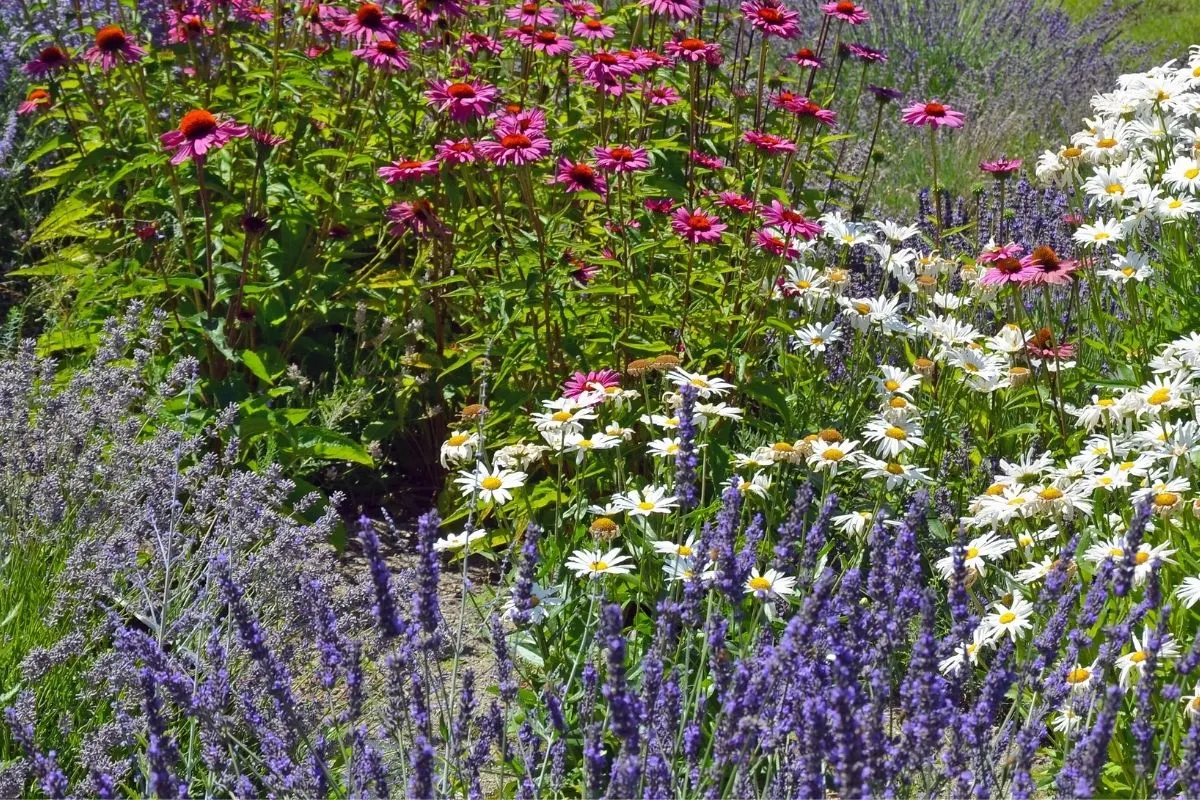
7 Best Companion Plants for Lavender
1. Purple coneflower (Echinacea purpurea)
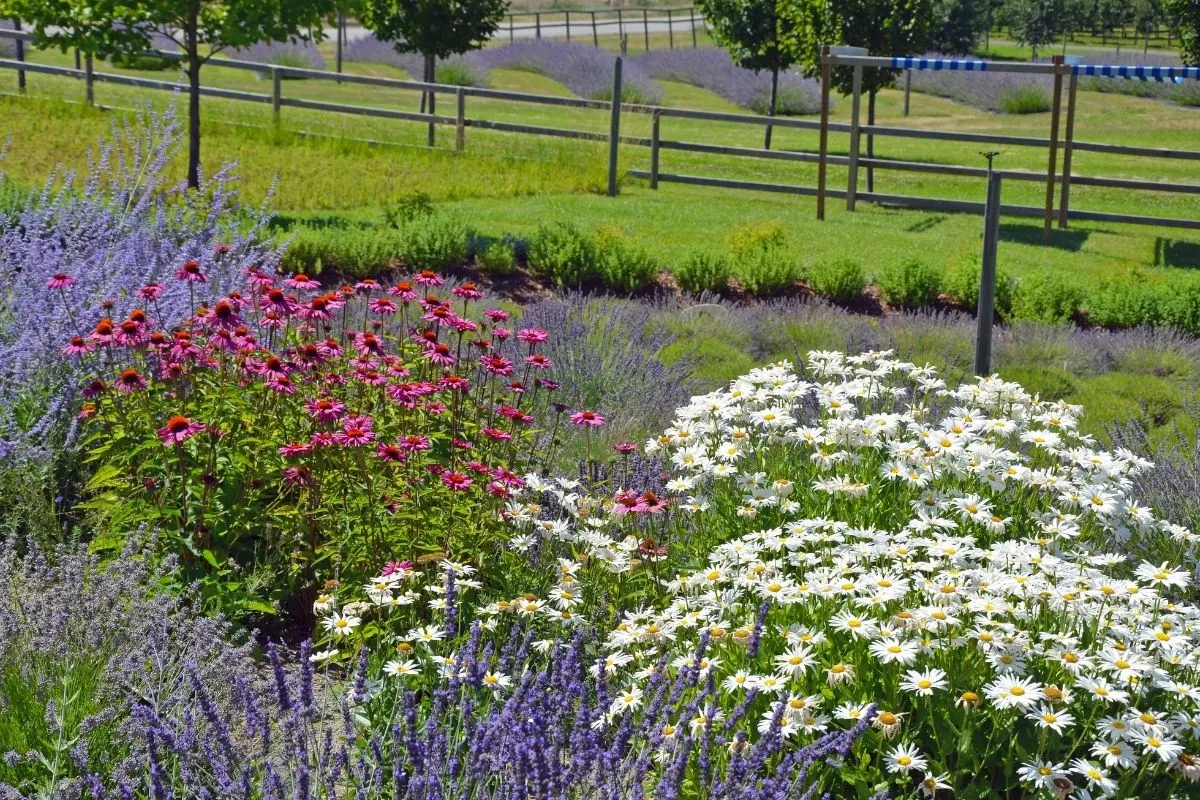
Purple coneflower plants are tall and regal, with blooms that survive the hottest summer weather. If you live in a place that has hot summers, this is a plant that is perfect for your garden.
Coneflowers are the plants that keep on giving, since they prolifically self-sow, dropping seeds each fall to make new baby plants next spring. However, to keep the blooms coming in the summer, you should deadhead the flowers as they fade.
Coneflowers attract butterflies and bees in great quantities, which are great for lavender plants as well. When the flowers go to seed, small birds like goldfinches and tufted titmice will peck at the seed heads. These plants are drought resistant, and deer and rabbits seem hesitant to make a meal of these prickly plants.
2. Roses (any plants in the Rosaceae family)
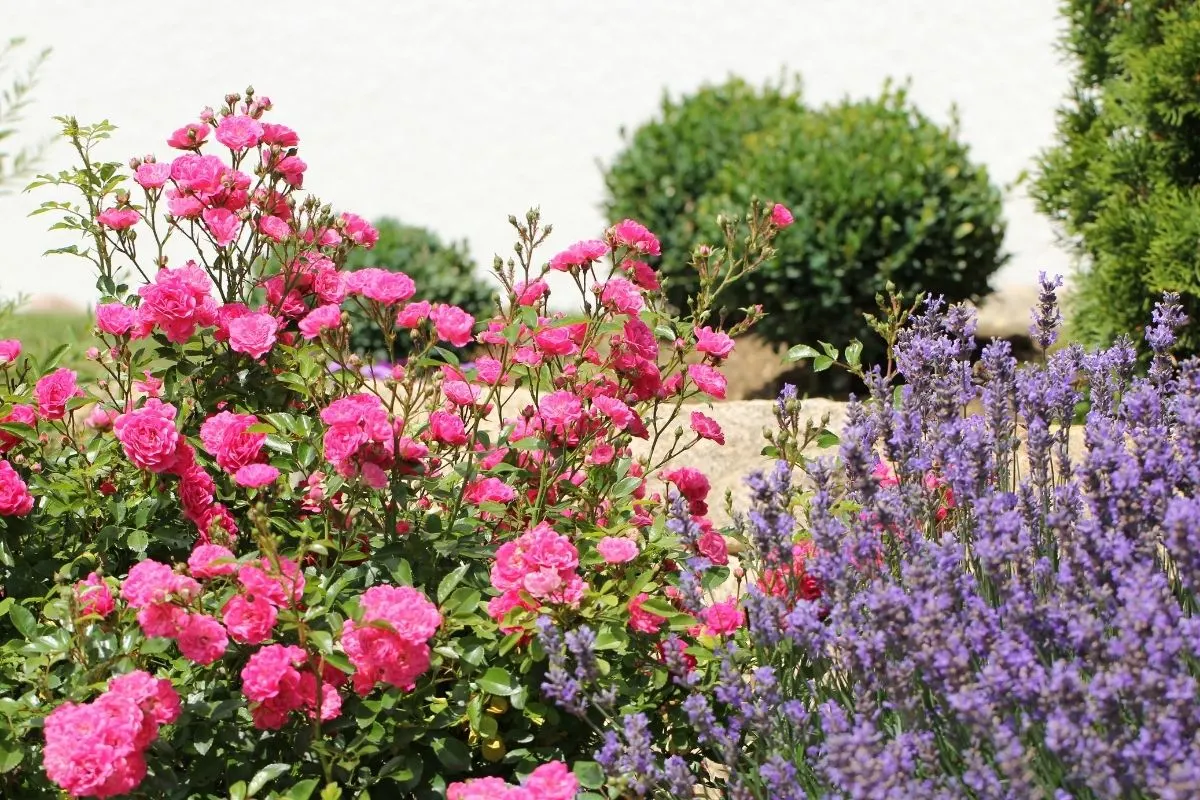
A classic pairing, particularly in the English garden style, roses, and lavender pair well together. They both have similar needs and will fill your garden with fragrance and beauty.
While most people consider roses to be fussy plants, there are varieties of roses that are much lower in maintenance. While hybrid tea roses take quite a bit of special care, shrub roses and the new “Knockout roses” don’t need to be babied to thrive.
One thing to remember is to give lavender plants space from your roses, since the roses may need a bit more water during dry spells, which can lead to mildew in the lavender plants. However, to increase the fragrance of your garden, lavender and roses are a perfect match.
3. Marigold (any plants in the Tagetes family)
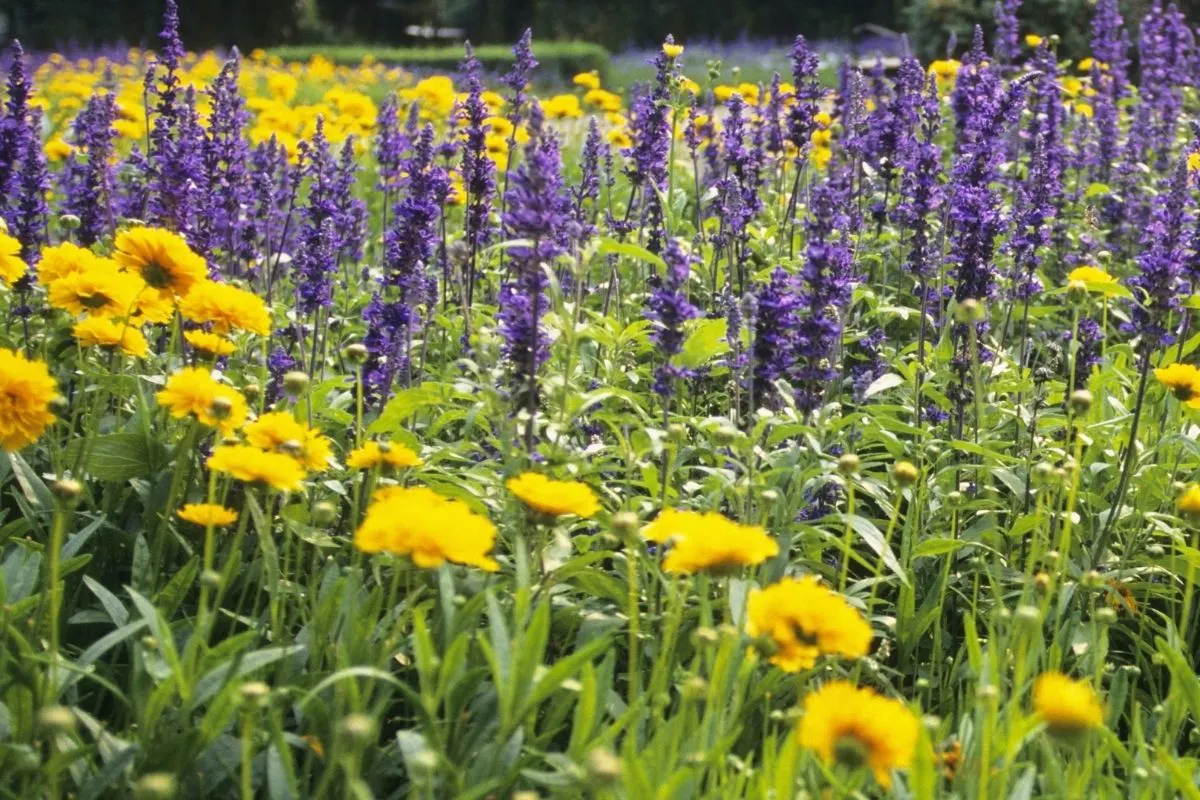
Whether you grow your marigolds from nursery starts or from seeds, you will quickly find that marigolds are great beginner plants. These annuals come in a variety of colors, shapes, and sizes, and if you want to try several kinds in your garden, the marigold seed is inexpensive and easy to find. It also sprouts easily and grows well in almost all climates.
Marigolds need well-drained soil and full sun. They grow well in average to poor soil, but will really thrive if you give them a boost with water-soluble fertilizer like Miracle Grow once a week. Marigolds attract beneficial insects like bees and ladybugs while deterring pests from other plants like lavender.
4. Sage (Salvia officinalis)
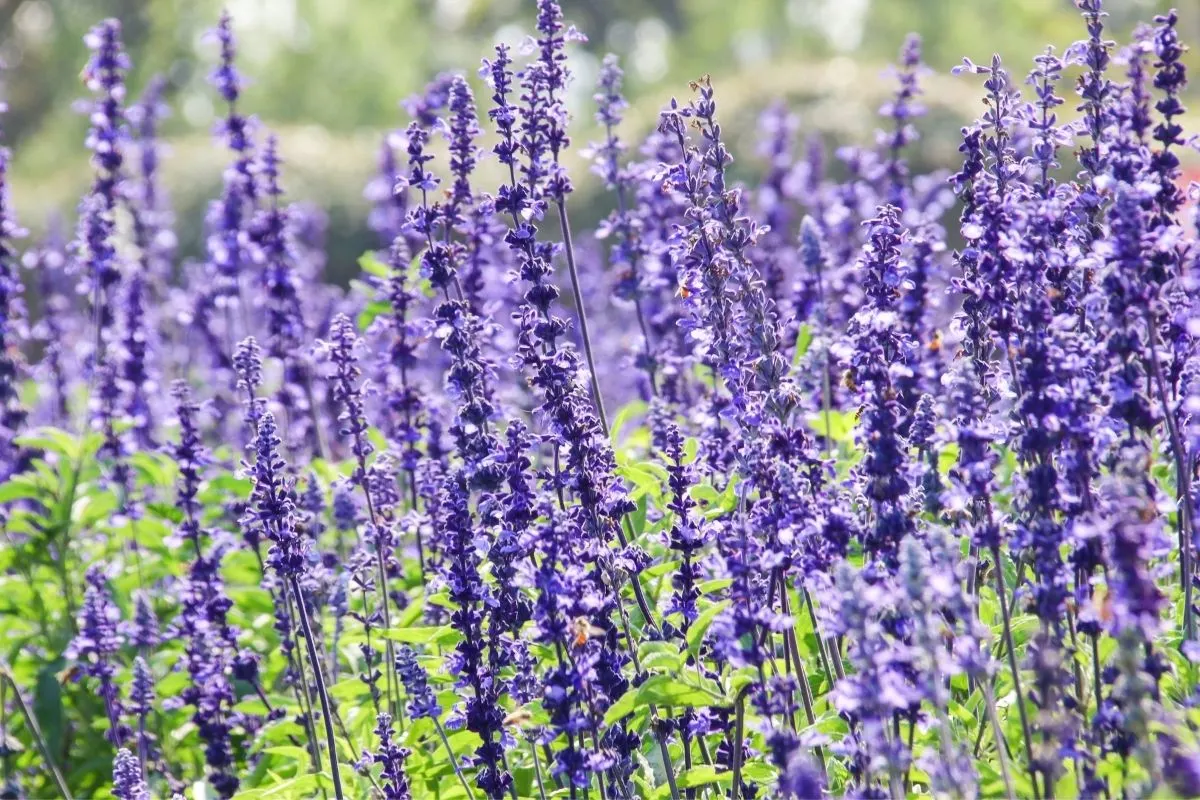
With a delicious piney aroma, sage makes a great companion for lavender. This plant is a major asset to the culinary herb bed since it, unlike many kinds of herbs, remains flavorful even as the plant’s leaves grow larger. Even after the plant flowers, its leaves are still delicious.
Sage is a perennial plant which means that from early spring to late fall, you can enjoy its beauty and flavor. Very adaptable, sage plants grow in a wide variety of climates. The only thing that sage requires is sunlight and well-drained soil, making it one of the easiest plants to grow in the garden. Sage deters pesky bugs that can bring disease and feed on other plants like lavender.
5. Rosemary (Salvia rosmarinus)
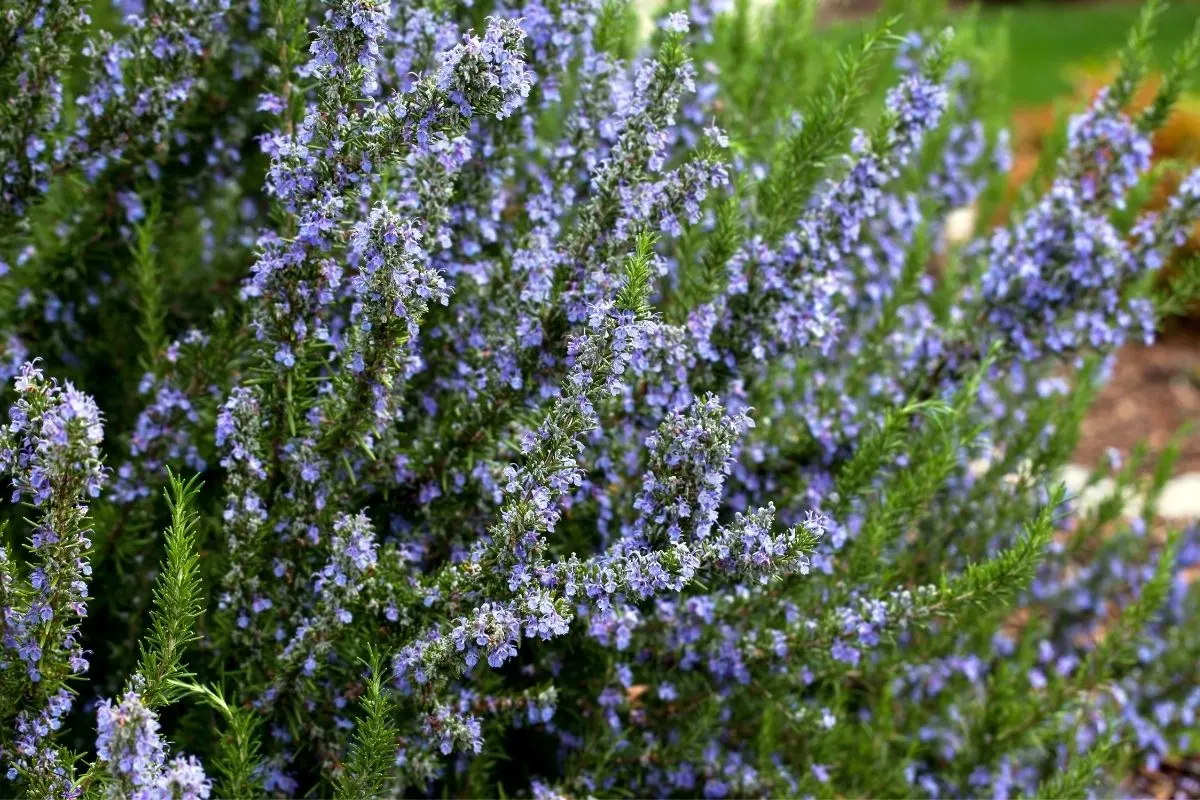
Sharing common origins with the lavender plant, since both came from Mediterranean climates, rosemary is an excellent companion plant to the lavender plants. A delicious herb with fragrant foliage that you can use in your kitchen, rosemary has the exact same care requirements as lavender. Rosemary will deter deer and rabbits from your herb beds.
Like lavender, rosemary needs full sun and minimal water. It does not like soggy roots. Rosemary is not very cold tolerant and will die if exposed to temperatures lower than 30 degrees. For this reason, many people in cold climates grow rosemary in pots which they move indoors during the colder months.
Did you know that rosemary flowers are edible?
6. Shasta daisy (Leucanthemum superbum)
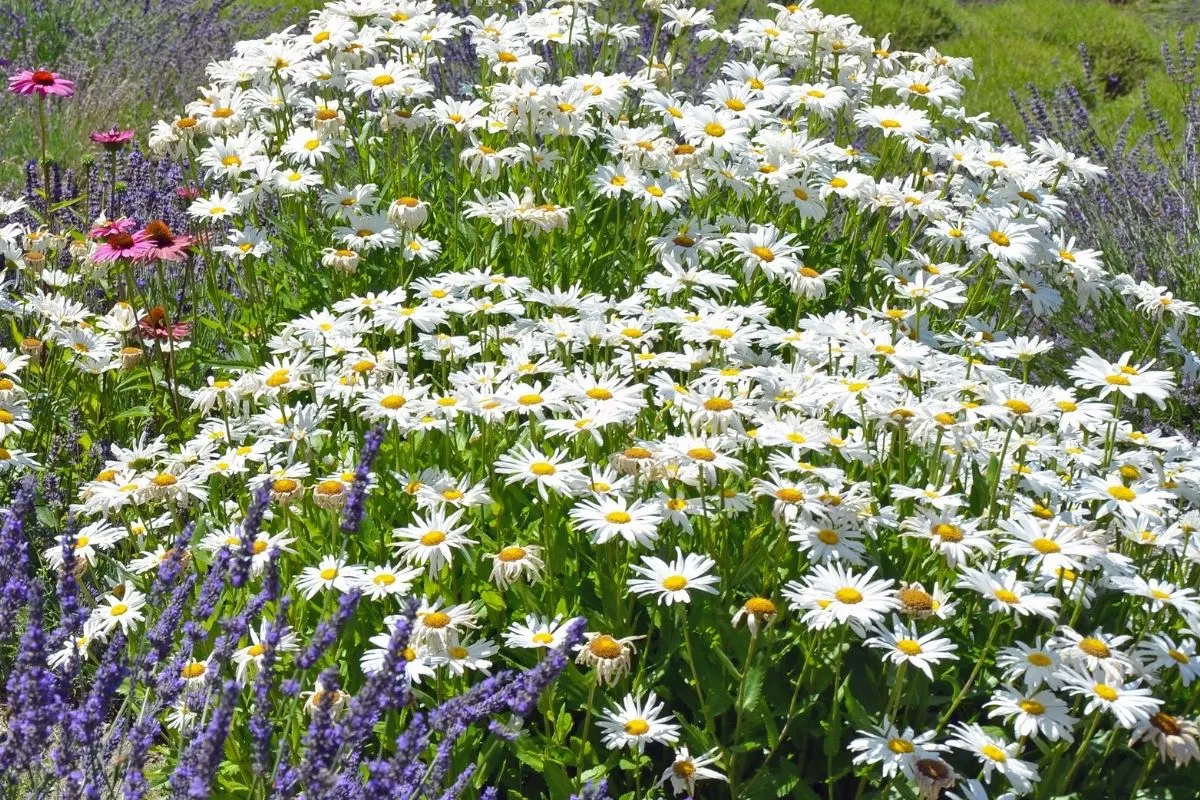
If you want a low-maintenance plant that has gorgeous blooms to accent the tall purple spikes of your lavender plant, you may want to look into growing Shasta daisies. These plants have cheerful white blooms with yellow centers. They love full sun, hot weather, and dry weather. They also have similar water needs to lavender.
Shasta daisies are great for the “lazy gardener” since they thrive on benign neglect once the plants are established. They don’t really have any diseases or pests that trouble them. To have the best blooms on your Shasta daisies, you will want to provide fertile soil for the plants.
These plants also need well-drained soil and will not do well in a bed that is soggy. Daisies attract bees in great numbers.
7. Zinnia (Zinnia elegans)
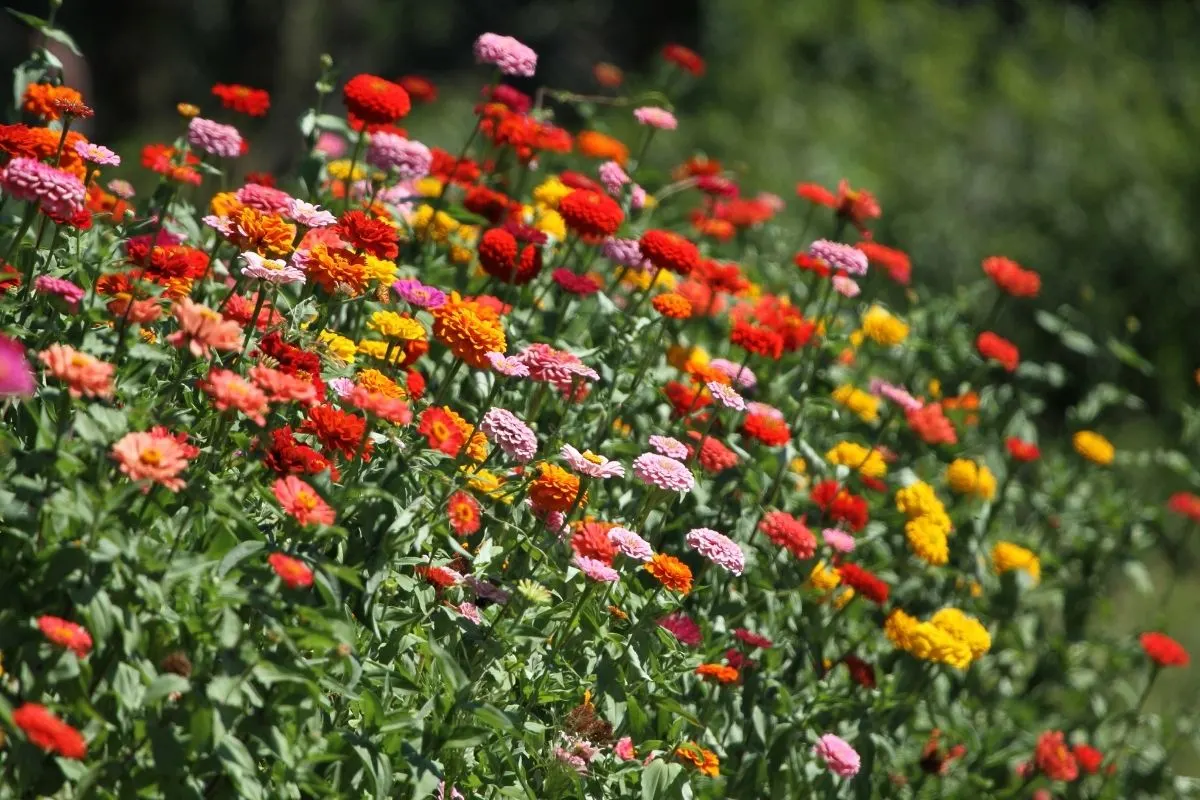
One of the easiest annual flowering plants to grow, zinnias have been a favorite flower for generations. These easy-to-grow plants come in a huge variety of sizes, shapes, and colors, so there are sure to be multiple zinnias that will look good when paired with lavender. Zinnias grow easily from seed, but you can also find them in the garden center, potted, so you can quickly have flowers in your garden.
Zinnias are perfect plants for beginning gardeners and children. Here’s a step-by-step guide to growing zinnias.
Zinnias love full sun and hot weather. As long as you keep the fading flowers trimmed away, you will have blooms on your zinnia plants from mid-summer till frost.
If you are growing your lavender in a garden specifically for cutting flowers, zinnia is one plant that you will want to include. These plants have showy blooms on stiff stems that are perfect for cutting and displaying. Zinnias bring beneficial bugs like ladybugs, butterflies, parasitic wasps, and bees to the garden.
How to grow lavender for fun and profit
3 Plants to Keep Away from Lavender
1. Impatiens (any plant in the Impatiens family)
Impatiens are gorgeous flowers that will look stunning paired with Lavender’s gray-green foliage and upright flower spikes. However, just because a pairing would look good doesn’t mean that they are compatible. Impatiens need full shade–period. They will die in the sun. Lavender needs full sun, and while the plants may not die in a shady spot, they definitely will not thrive. If you try to plant lavender in a shady spot with impatiens, they will not grow and probably will never flower.
2. Mint (any plant in the Mentha family)
Mint is a popular herb in the garden because it grows very easily. In fact, many gardeners prefer to plant their mint in pots because it will take over, spreading by runners.
However, mint doesn’t pair with lavender very well because of the water needs of mint. Lavender needs well-drained soil and does not tolerate soggy beds. If you try to pair mint with lavender, one plant or the other will die because their water needs are just too different.
3. Hostas (any plant in the Hosta family)
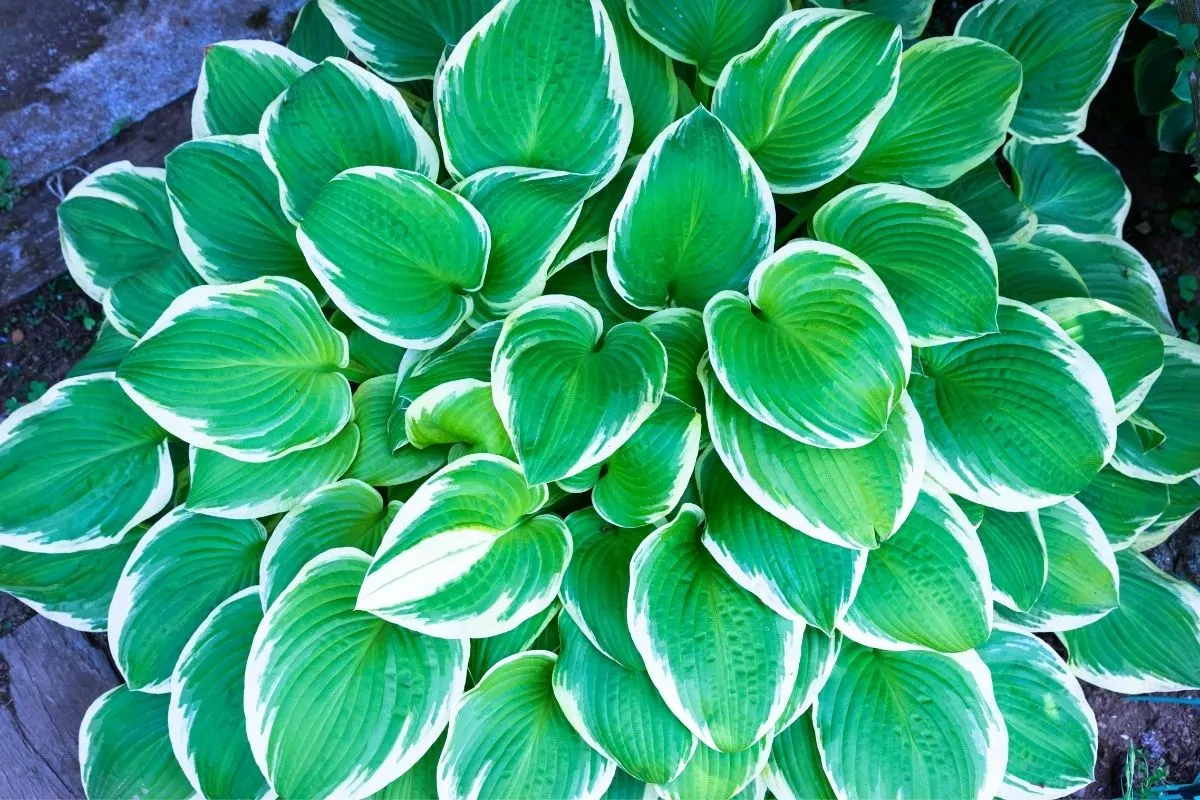
Hostas are stunning plants that have gorgeous foliage. Some are all green, some have variegated leaves with white stripes, and some are greenish-blue.
However, the big problem with trying to pair hosta with lavender is that the two plants have sun needs that are completely opposite. Hostas need deep shade and will sunburn if the light is too direct. Lavender needs full sun to thrive. These are two plants that won’t do well if you try to grow them in the same place.
How Do I Grow Lavender?
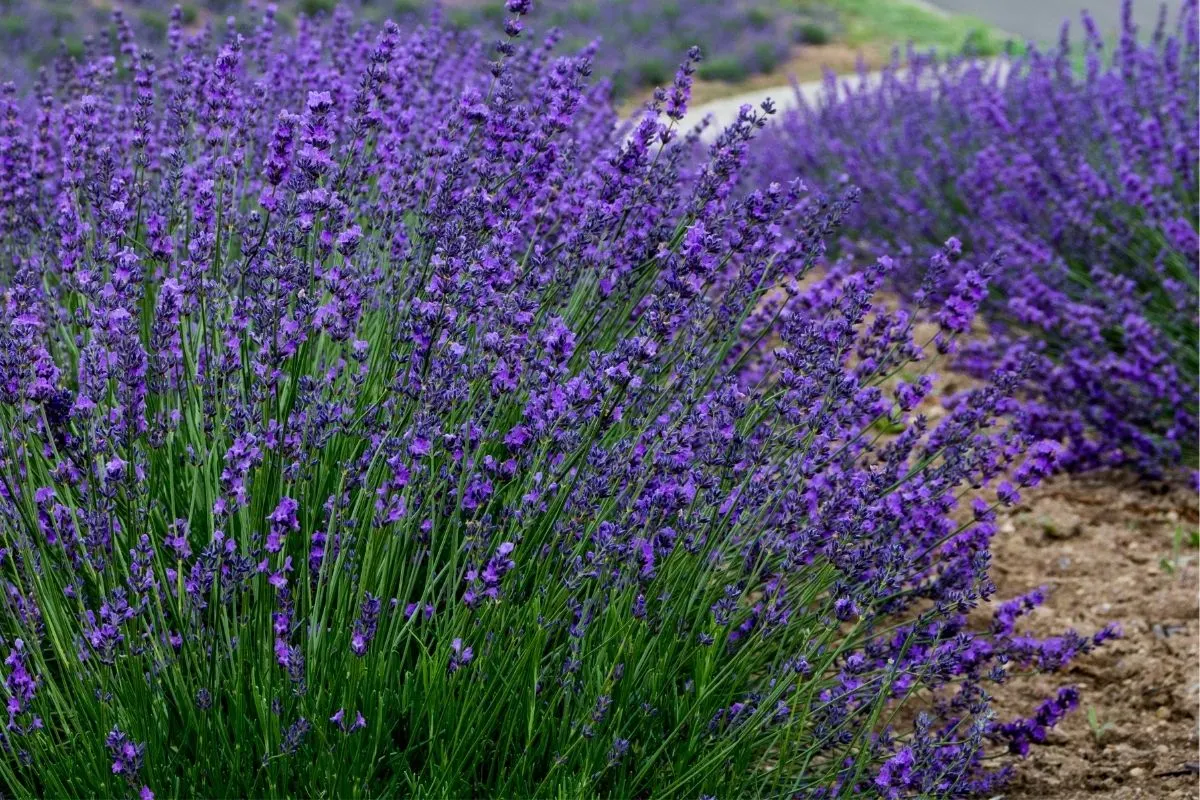
An eye-catching perennial plant, lavender has tall, upright spikes of purple, fragrant flowers, and beautiful gray-green foliage. Lavender is fairly easy to grow, needing low or moderately fertile soil.
Add a few culinary lavender varieties to your garden, and enjoy their flowers in teas, cookies, cakes, and other treats.
The most important thing to remember when growing lavender is that it needs full sun and well-drained soil. Once the plants are established, lavender plants are remarkably low maintenance, making them a great choice for gardeners who may not have much time to pamper their plants. Even during dry periods in the hot summer, lavender will continue to flower and grow.
Lavender plants bloom in the summer months. The flowers can be harvested fresh or dried, but to keep the plant making more flowers, you should deadhead the flowers after the blooms start to fade.
Older plants will need slight pruning in the spring. To do this, you just need to cut the plant back by a third to stimulate the plant to grow new, fresh foliage and flowers.
Lavender is a lovely plant that will bring great benefits to your garden. When you pair it with other plants that have similar needs, your garden will grow beautiful and fragrant. Whether you are growing lavender in your herb garden, your cutting flower garden, your butterfly garden, or just in a flower bed to enjoy, there are plenty of plants that pair well with it. By knowing the companion plants for lavender, gardening will become much more pleasurable as the plants will bring out the best in one another.
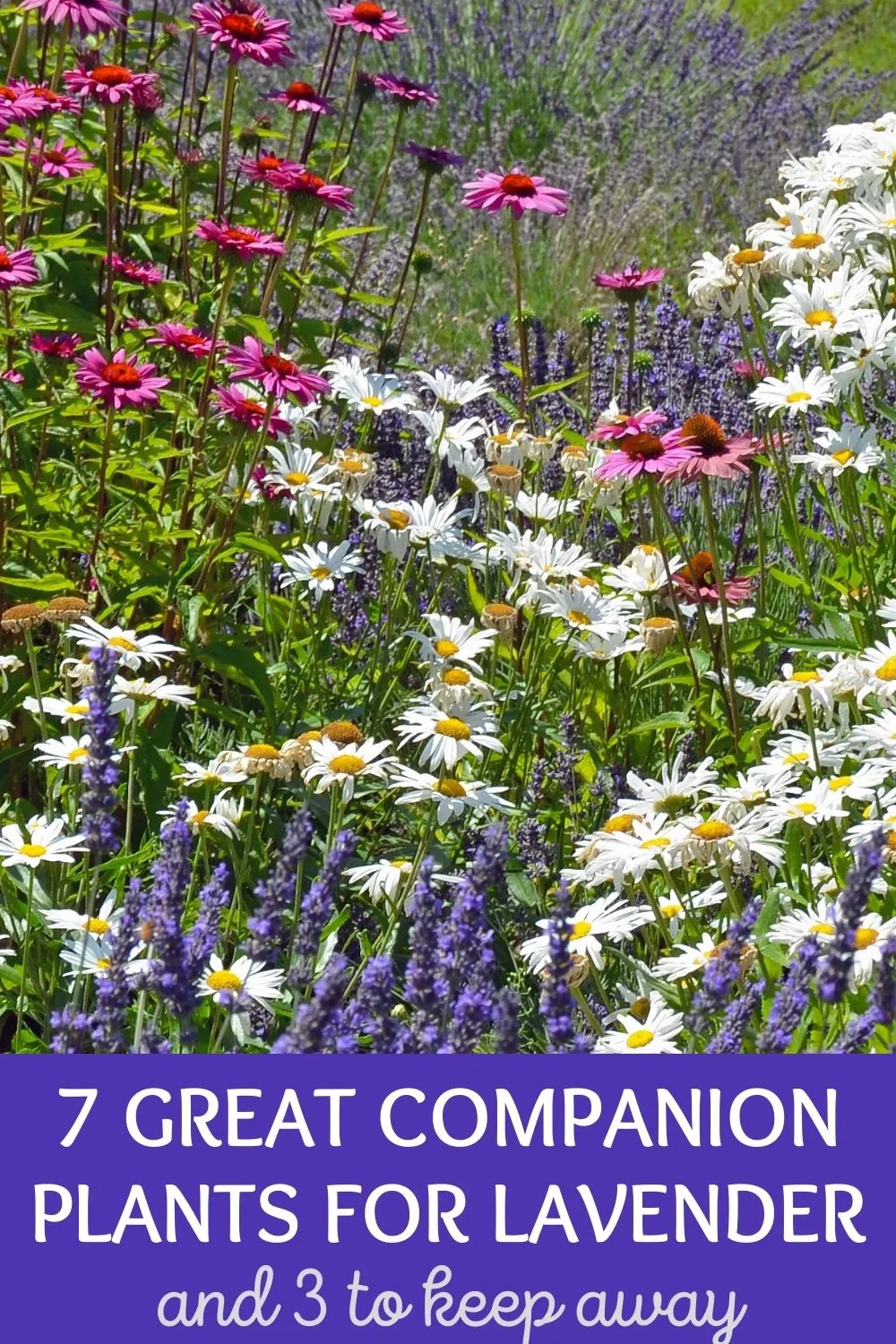



The Best Mulch For Lavender - 6 Great Options
Tuesday 17th of January 2023
[…] companion plants for lavender […]
How To Grow Lavender From Cuttings In 6 Easy Steps
Saturday 14th of January 2023
[…] Companion plants for lavender […]
The Best Fertilizer For Lavender
Saturday 14th of January 2023
[…] Companion plants for lavender […]
How To Prune Lavender: Tips For Healthy And Attractive Growth
Tuesday 10th of January 2023
[…] companion plants for lavender […]
Companion Planting Guide (Including 7 Benefits Of Polyculture)
Thursday 31st of March 2022
[…] Companion plants for lavender […]